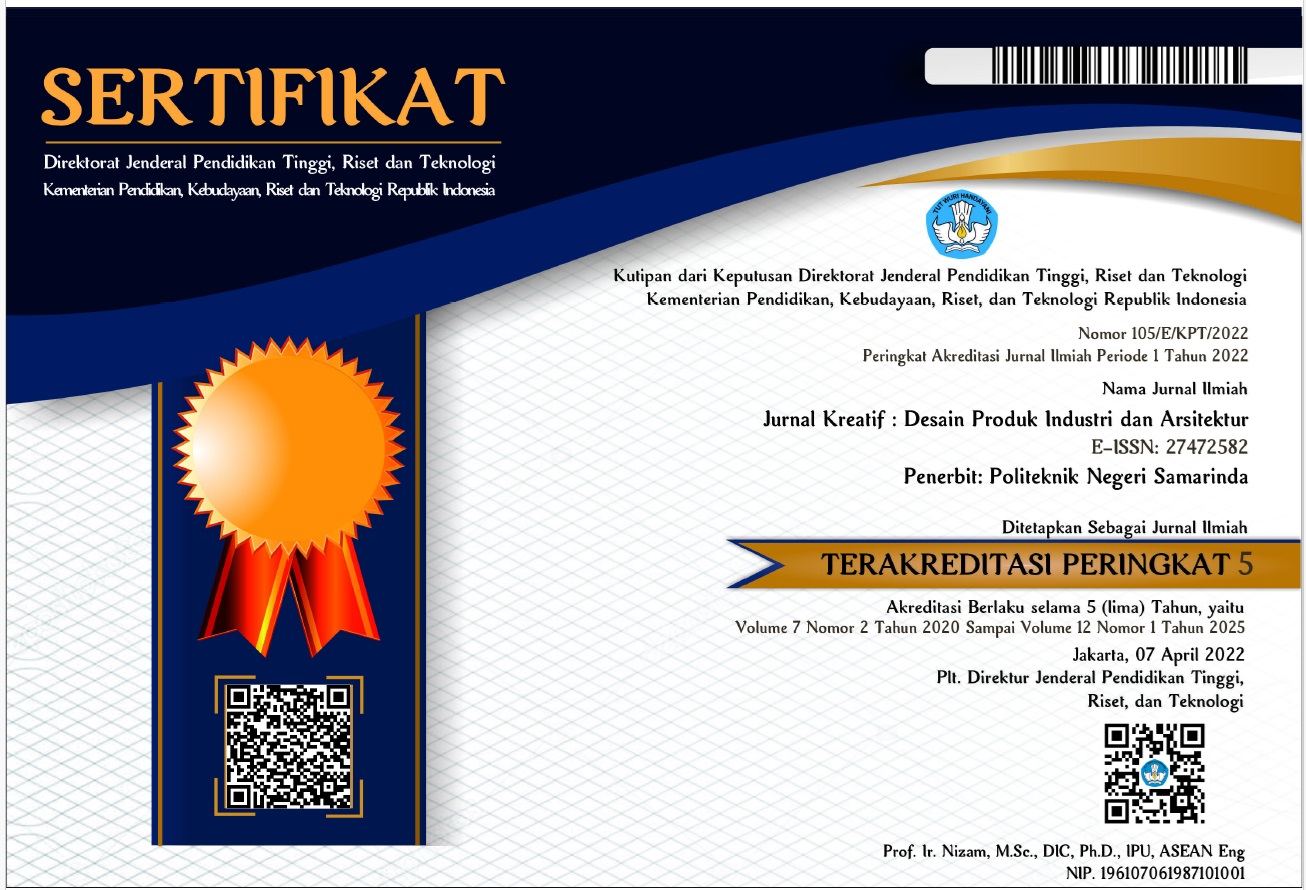PEMANFAATAN LIMBAH BATOK KELAPA DAN KAYU ULIN UNTUK PRODUK PERHIASAN WANITA
 Abstract views: 481
,
Abstract views: 481
,
 pdf downloads: 440
pdf downloads: 440
Abstract
The development of a modern, dynamic, and fashionable lifestyle, Jewelry was born in the midst of human life, especially for women. Jewelry is a trinket or decoration that has a function as a tool to beautify or beautify oneself to make it look more attractive. The problem at this time is the lack of utilization of coconut shell and ironwood waste which is only burned or thrown away. The purpose of making this product is to utilize coconut shell and ironwood waste material into a jewelry product that has selling value and aesthetic value. This product design method starts from alternative sketches, developing selected designs to become final designs or final designs, with research methods through data obtained from questionnaires, until the final results of jewelry designs are obtained from coconut shell waste and wood with a wood connection system with glue, with finishing using varnish that shows the natural color of coconut shell and ironwood, which is brown. So the conclusion of this design is the design of jewelry from coconut shell waste and ironwood that can be used and has aesthetic value and selling value.
Downloads
References
[2] V. Ghoel, Sketches of thought. MA: MIT Press, 1995.
[3] A. Triono, "Karakteristik Briket Arang dari Campuran Serbuk Gergajian Kayu Afrika (Maesopsis eminil EngL) dan Sengan (Paraserianthes falcataria L Nielsen) dengan Penambahan Tempurung Kelapa (Cocos mucifera L)," Bachelor, Departemen Hasil Hutan, Fakultas Pertanian, Institut Pertanian Bogor, Bogor, 2006.
[4] "manfaat kayu ulin." https://www.google.com/amp/s/amp.dekoruma.com/artikel/65258/manfaat-kayu-ulin. (accessed.
Copyright (c) 2022 Cindy Ayu Citra, Ramadhan S. Pernyata, Andi Farid Hidayanto

This work is licensed under a Creative Commons Attribution-ShareAlike 4.0 International License.
Authors who publish with this journal agree to the following terms:
- Copyright on any article is retained by the author(s).
- The author grants the journal, right of first publication with the work simultaneously licensed under a Creative Commons Attribution License that allows others to share the work with an acknowledgment of the work’s authorship and initial publication in this journal.
- Authors are able to enter into separate, additional contractual arrangements for the non-exclusive distribution of the journal’s published version of the work (e.g., post it to an institutional repository or publish it in a book), with an acknowledgment of its initial publication in this journal.
- Authors are permitted and encouraged to post their work online (e.g., in institutional repositories or on their website) prior to and during the submission process, as it can lead to productive exchanges, as well as earlier and greater citation of published work.
- The article and any associated published material is distributed under the Creative Commons Attribution-ShareAlike 4.0 International License













